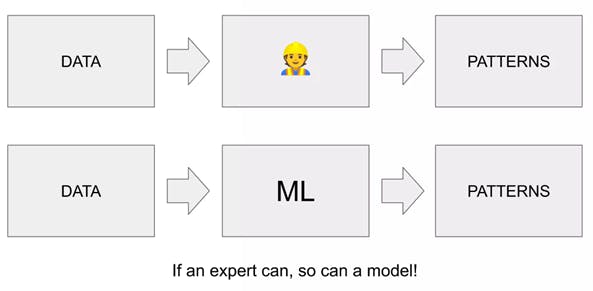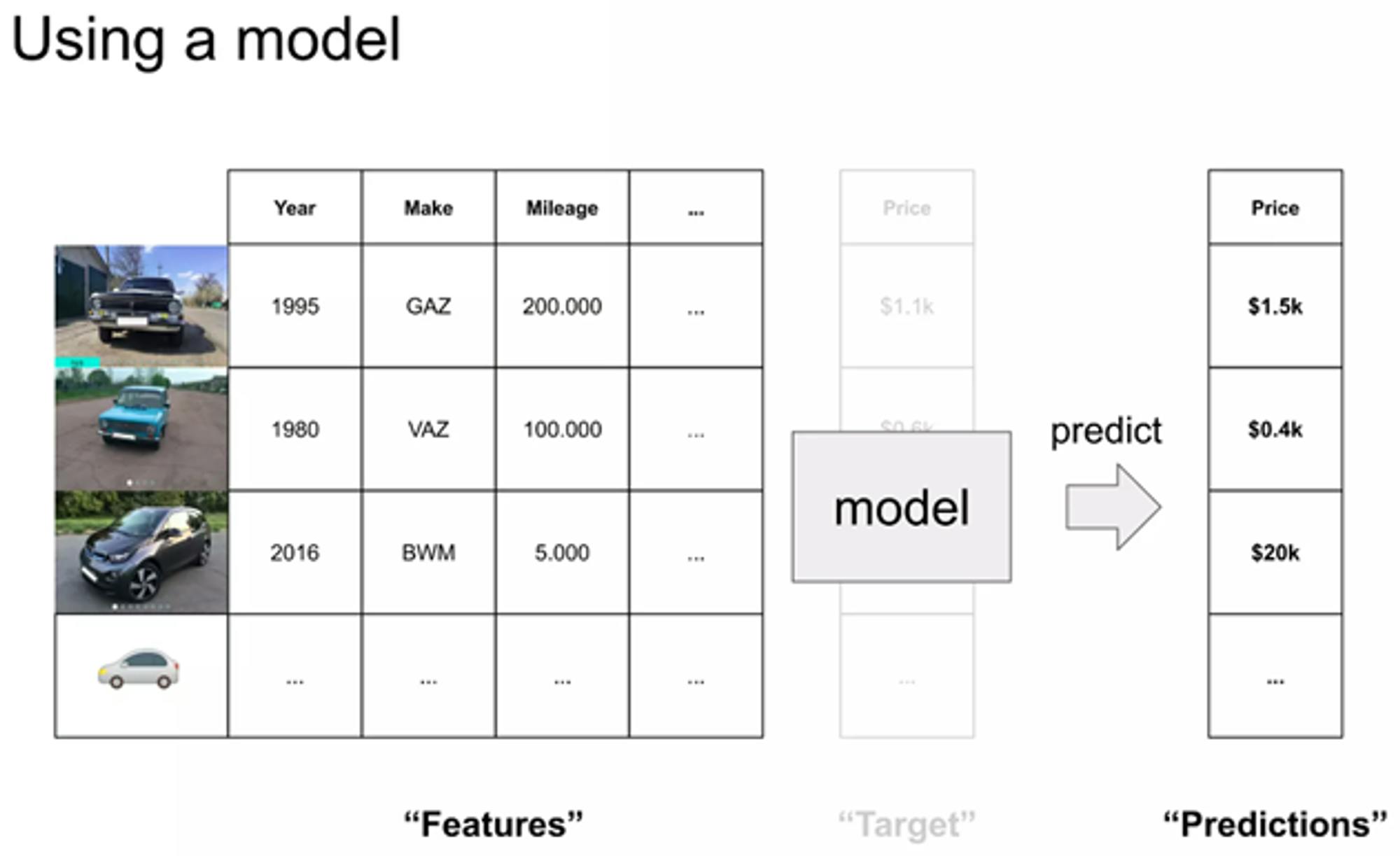Table of contents
An example
To introduce machine learning let us introduce a simple example. Suppose we are running a Car classified website where we let people sell or buy used cars.

So suppose a person wishes to sell his car and post a picture of car in our website with other details but finds difficulty in determining the correct price of the car.
As the owner of the website you help the user selecting the best price of the car through machine learning.

You can imagine a task that is normally done by an expert, like getting a good price for selling a car. The expert takes the data about the car and combines all the characteristics to get his opinion about the fair price. What he does is, he extracts patterns from the data.If a human is able to do this, so a model can do the same.

What is Machine Learning?
Machine Learning (ML) is about using features and the target information to train a model and use this model to predict unknown object targets. In other words it is a process of extracting patterns from data (features+target).
Let us understand these terms one by one ➖
Features means what we know about an object. In this example what we know about the characteristics of a car. A feature is a characteristic of an object in form of a number, string, or other more complex form (e.g. location information, …)
Target is what we want to predict. Other courses / sources also use the term label for this purpose.That means, in training, you talk about a labeled data set because you know the target. In this example, many labeled data sets of cars with prices are used to predict a label for an unknown data set of another car.
A model is the output artefact of a training that contains all the patterns learned from the trained examples. This output can be used later to make a prediction (try to output the target variable) based on features of an unknown object and the model itself.
Train a Model
Model training is the process where the machine extracts the patterns from the given training data. In easy words the features are combined with the target – this leads to the model.

Use a Model
Mere training does not make a model useful. Only the application brings the benefit. Applying the trained model to an unknown data set (without target), you obtain a prediction for the missing information (here: the price).

To summarize the difference between model training

and prediction

is that in training process you use features and the target to get the model. And in the prediction process you only use the features and apply the trained model to get a prediction for the target variable.
